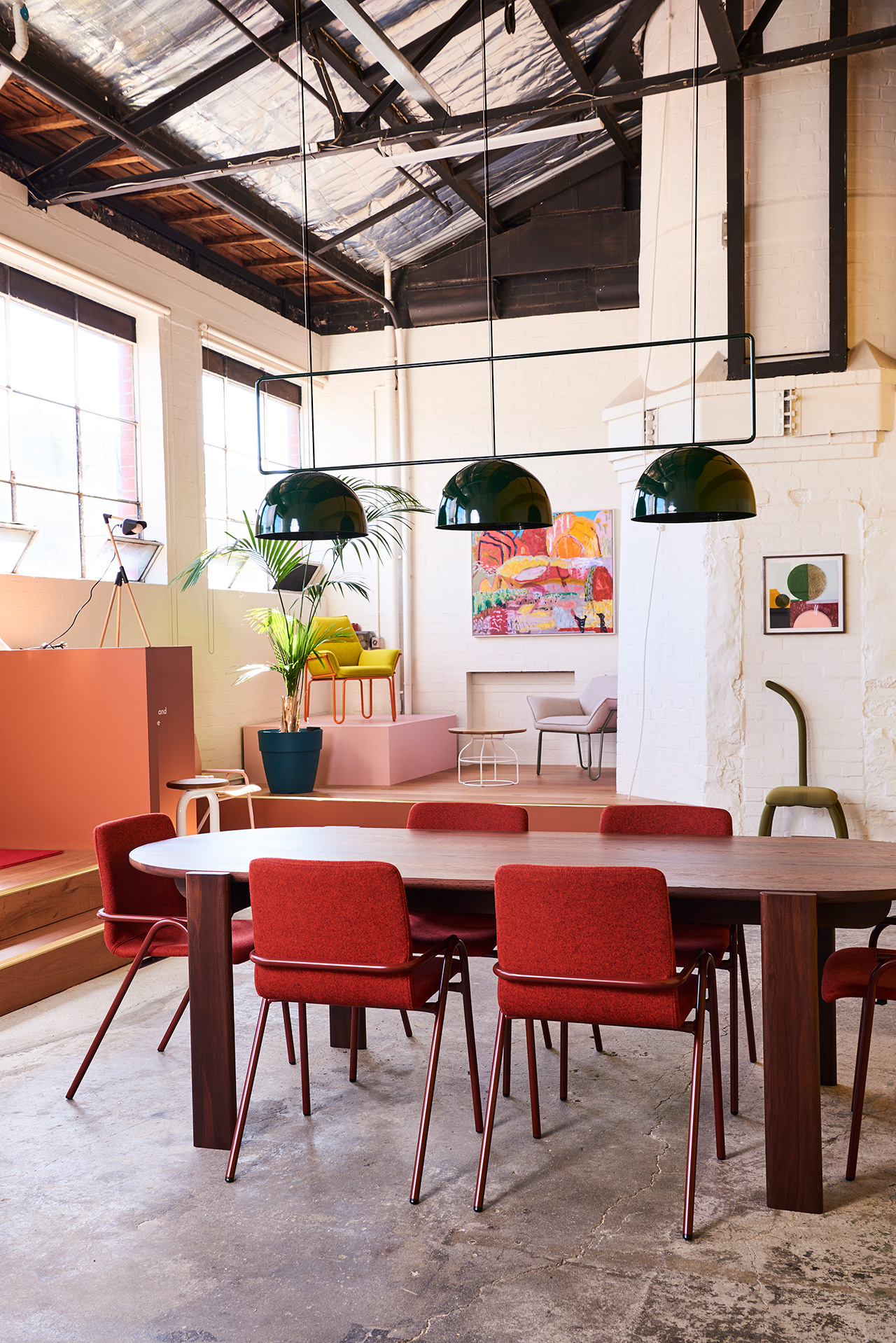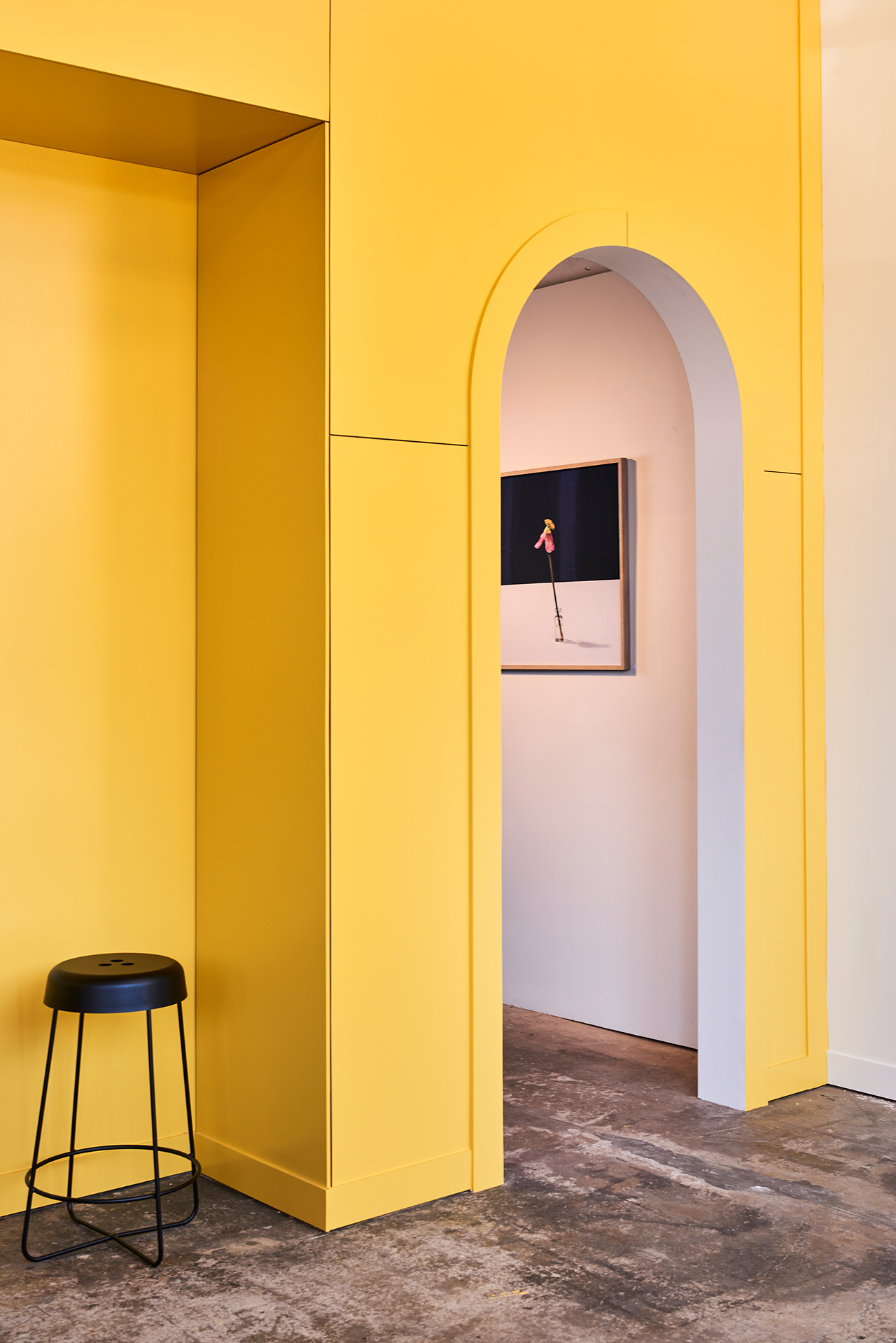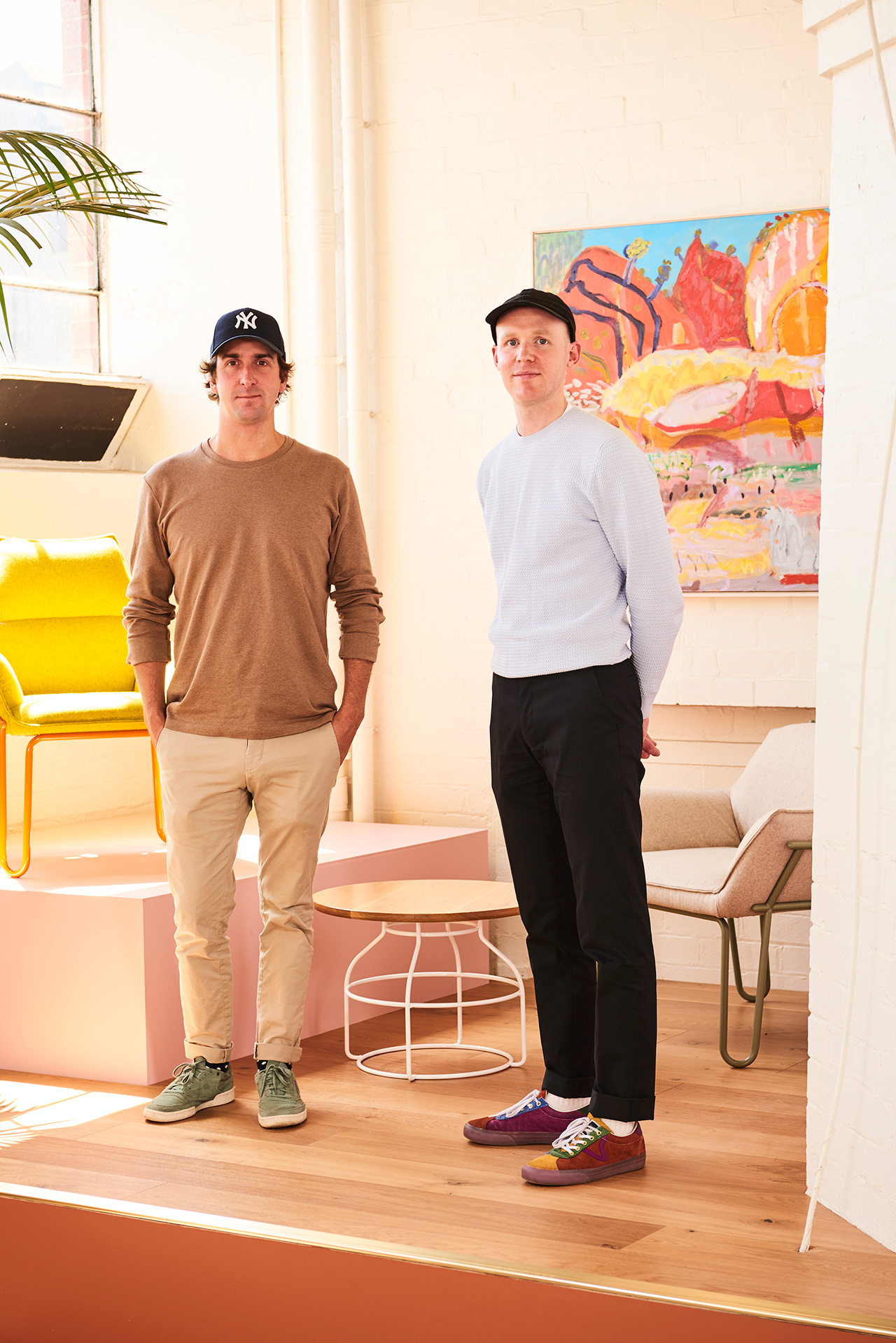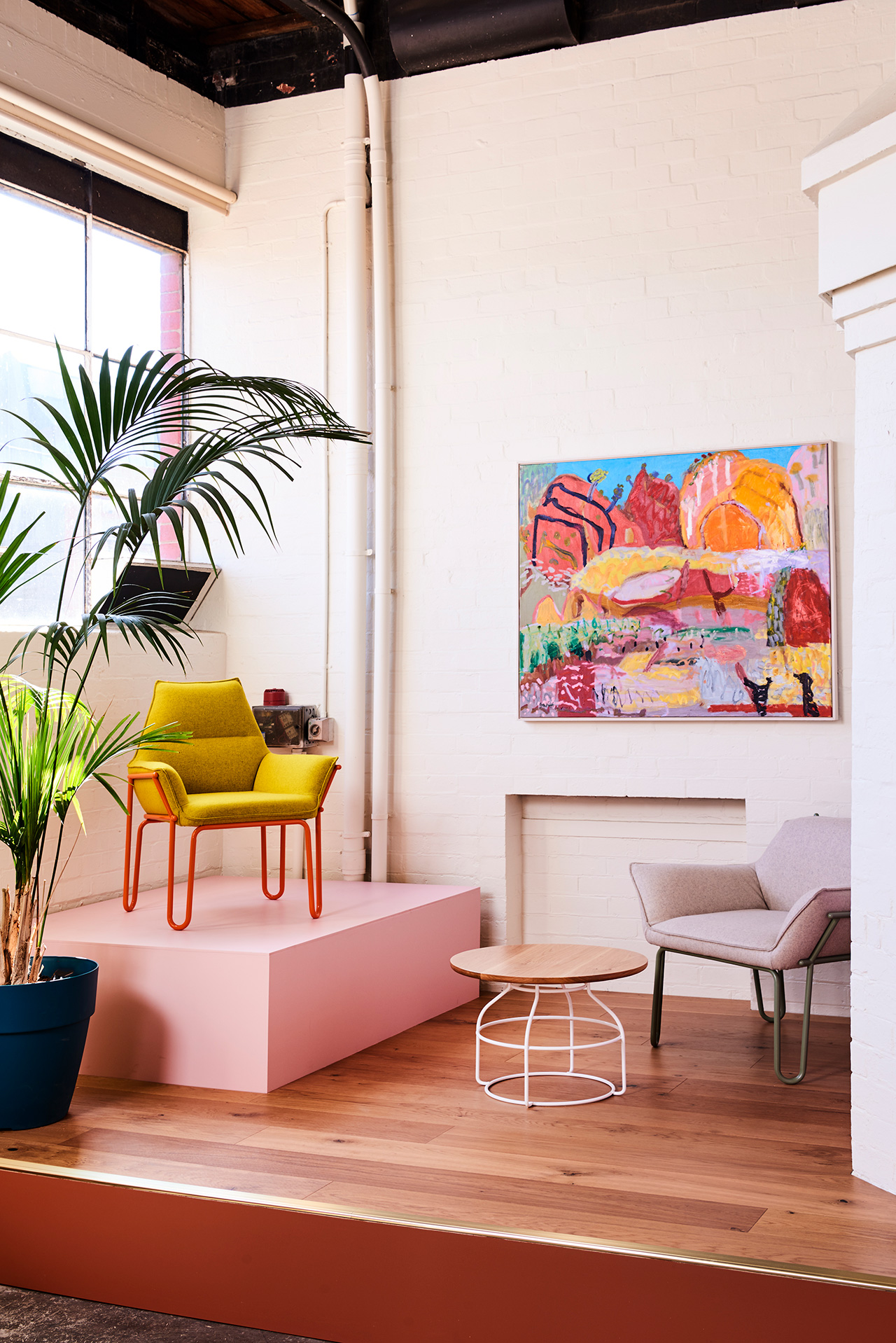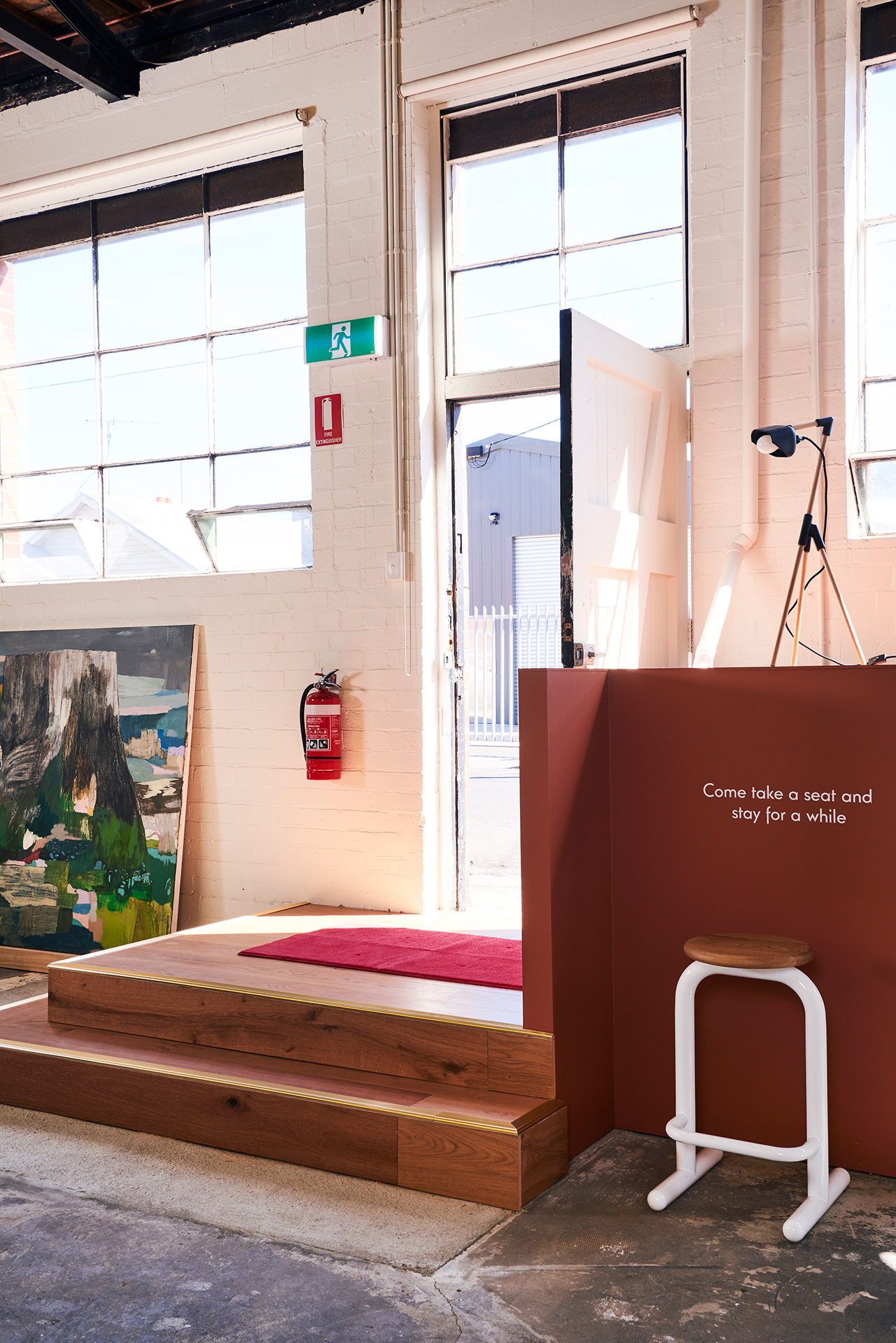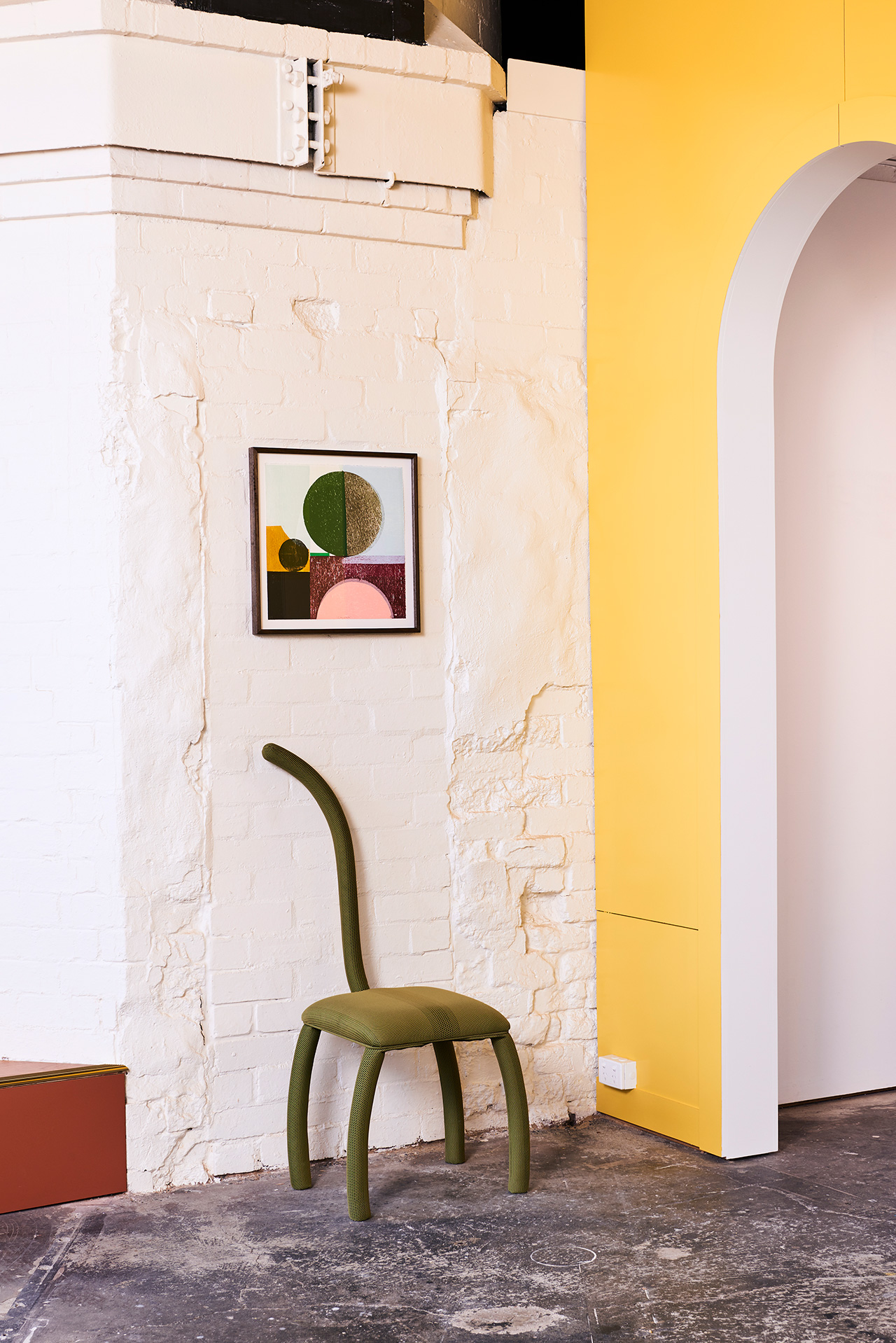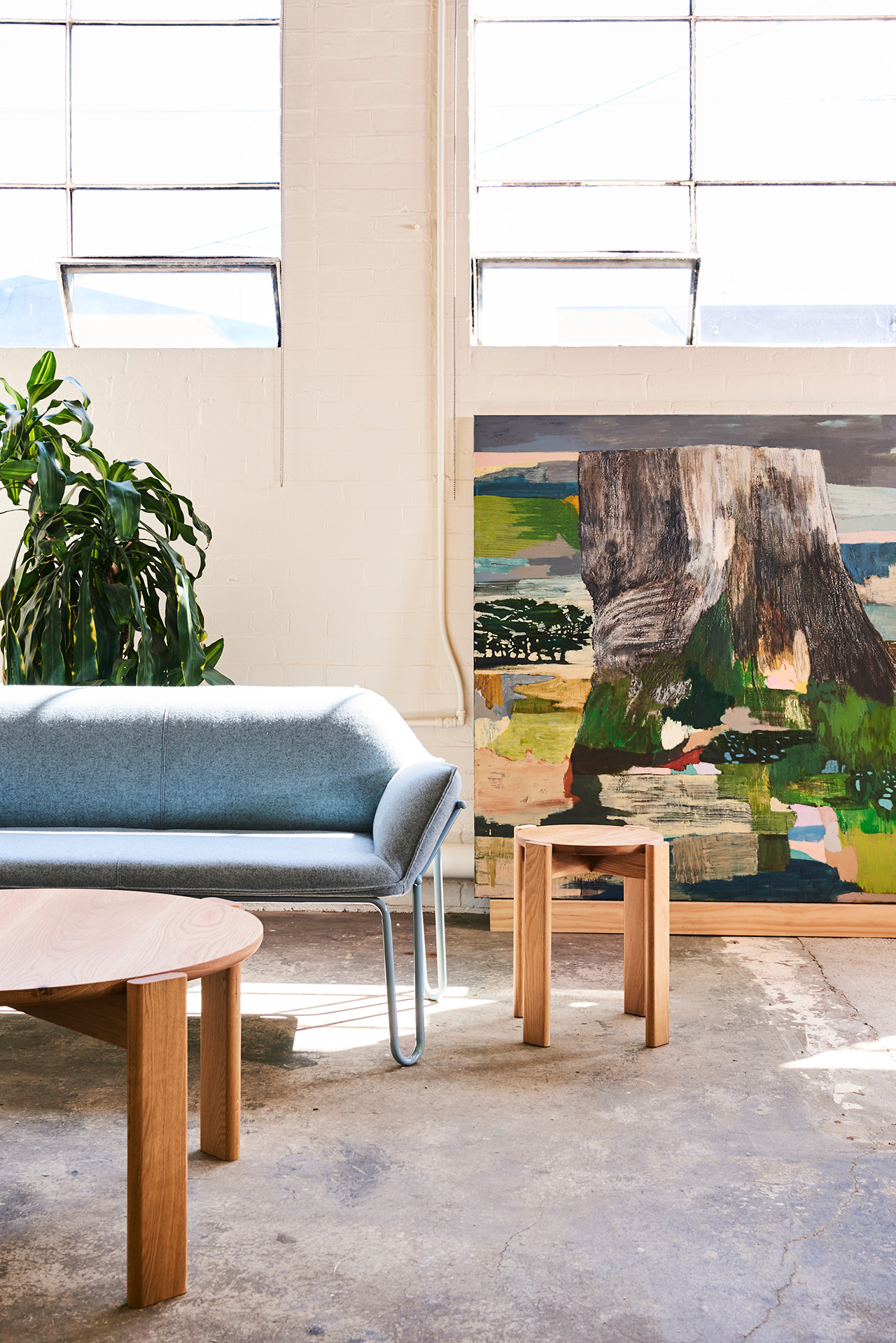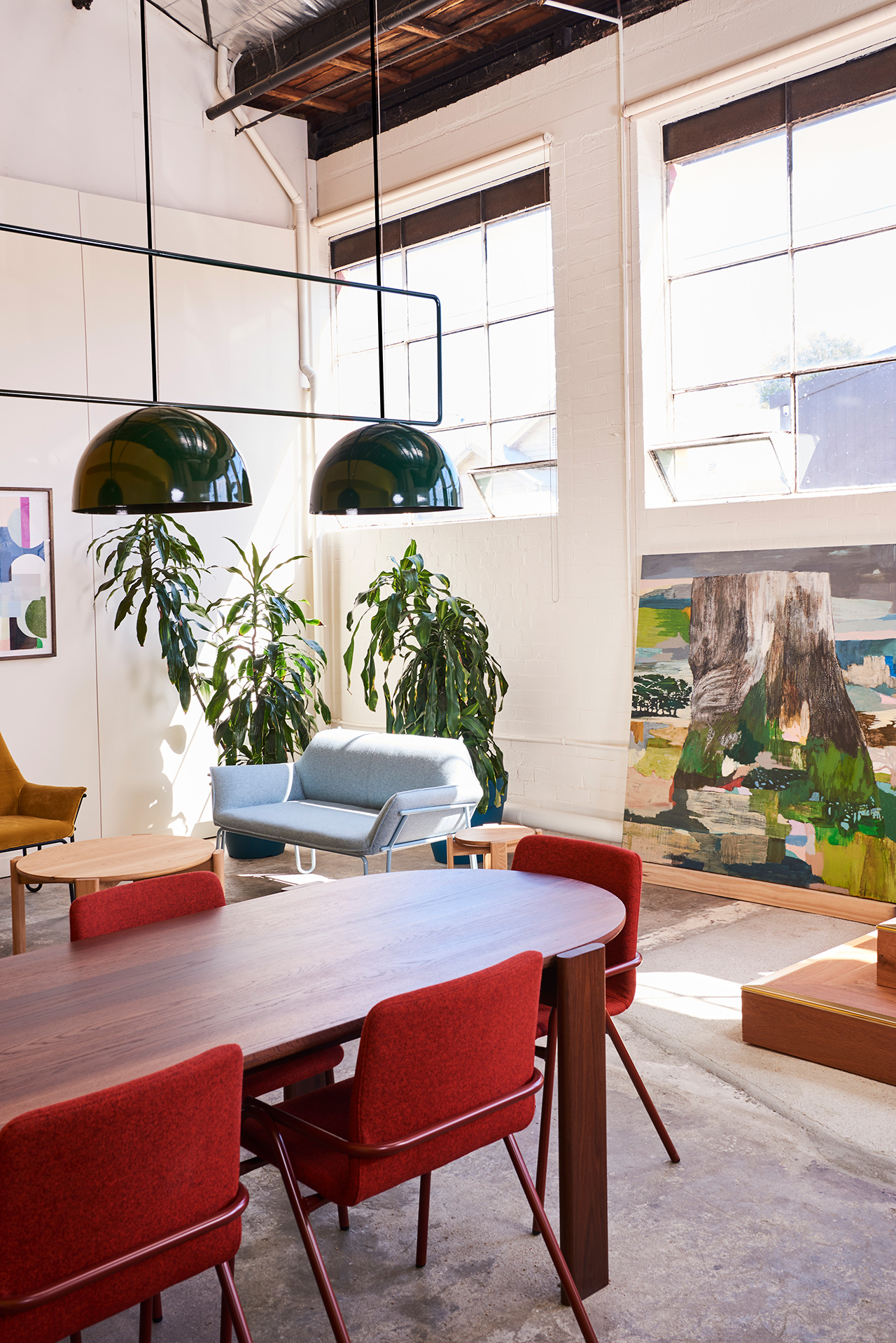News feed
For a duo well-versed in exhibiting in spaces both virtual and pop-up, it’s surprising that the designers behind Dowel Jones should choose this moment to make their first foray into bricks-and-mortar retail. Then again, designers Dale Hardiman and Adam Lynch are no strangers to courting the unexpected. Earlier this year, Dowel Jones staged a Lucky Dip exhibition that saw them riff on the suburban mythology of reject and two-dollar shops. Prior to that, they took their first upholstered collection of furniture to new frontiers – not only to New York Design Week but to the virtual space, where they collaborated with the New York-based Australian designer Tom Hancocks on a series of hyperreal 3D renderings of interiors in which to display their Sister collection.
It’s all part of an ongoing interrogation by the duo into how spaces form an integral part of how object design is experienced. The same could be said of their first Dowel Jones bricks-and-mortar retail venture, which adjoins the Boom Gallery in the Geelong suburb of Newtown in a heritage listed, former woollen mill. “The building has an incredible history,” Hardiman told GRAZIA. “In the past we’ve tended to choose locations for events and temporary launches based on the character of the building, and this building is no exception. Boom Gallery over the past seven years has cultivated a community of creative partitioners on Rutland Street through their gallery, shop, studio spaces and makers space, so we’re very happy to be joining a growing community and destination location.”
Where many of their contemporaries would look to fortify their presence online or in major cities, for Dowel Jones the long-discussed idea of opening a physical space has always dovetailed with the desire to do so outside of a major city (as recently as this year, the duo relocated their manufacturing to the Melbourne-adjacent city). For Hardiman, the work itself necessitates that it be able to be experienced in person, and not only on screen. “After we launched our first upholstered collection earlier this year we realised we really did need a physical space so that people could understand how these pieces would fit into the home,” he says. Everything contained therein (artwork not included) is a work of their own design, with the store then doubling as an immersive portfolio of their exhaustive offering to date. “We’ll be slowly introducing new smaller items into the store in 2019 so that those that don’t want to purchase a lounge can take something small home with them,” adds Hardiman. “The success of having a store so close to our factory means that we can update the interior with new, and never seen before pieces before they launch.”
It will also provide a home for the limited edition pieces that the designers create for exhibition at shows like Salone del Mobile, the Milan Furniture Fair, where earlier this year they showed Venena Arca (Latin for Poisonous Cabinet), a cabinet of curiosities clad in leather and tattooed with illustrations of toxic native Australian botanicals. “We see the store as not only a place to buy our furniture, lighting and accessories, but also a space to spend a little time in,” says Hardiman. In January, a second showroom will follow, this one based in Richmond; next month, however, they will launch a new project that utilises surplus and waste upholstery textiles to create fashion accessories. If it’s any indication, there will be plenty more tricks to come.
Tile and cover image: Supplied courtesy of Dowel Jones





